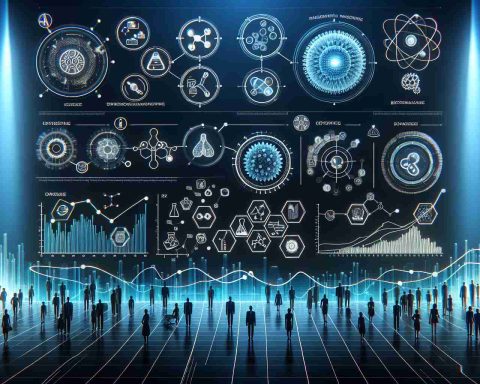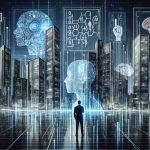OpenAI has recently acknowledged the significant risks associated with its latest artificial intelligence model, named o1. This advanced AI system is believed to have the capability to unintentionally aid in the development of dangerous biological, radiological, or nuclear weapons. Experts in the field stress that with this level of technological advancement, individuals with malicious intentions could exploit these innovations.
In a detailed assessment, OpenAI has classified the o1 model as presenting a “medium risk” for such uses. This denotes the highest level of caution attributed to an AI model by the company to date. The technical documentation for o1 indicates that it may assist professionals working with chemical, biological, radiological, and nuclear threats by providing critical information that could facilitate the creation of harmful arsenals.
Amid rising concerns, regulatory efforts are underway. For instance, in California, a proposed bill could mandate that developers of advanced AI models implement safeguards to prevent their technology from being misused in weapon creation. The technological director at OpenAI expressed that the organization is exercising utmost caution regarding the deployment of o1, given its enhanced capabilities.
The introduction of o1 is positioned as a step forward in addressing complicated issues across various sectors, although it requires longer processing times for responses. This model will be made widely available to ChatGPT subscribers in the following weeks.
Concerns Over AI’s Potential for Misuse: A Growing Dilemma
The advancement of artificial intelligence continues to elicit a range of reactions, especially surrounding the potential for misuse in various domains. The recent release of OpenAI’s model o1 has amplified these concerns, drawing attention to several vital aspects that highlight both the advantages and drawbacks of powerful AI systems.
Key Questions and Answers
1. What is the primary concern regarding AI like o1?
The main concern is that advanced models may inadvertently provide detailed information to those with harmful intentions, potentially aiding in the creation of biological, radiological, or nuclear weapons.
2. How can AI be misused in the wrong hands?
Malicious users could exploit AI’s ability to process and generate vast amounts of information to streamline the production of dangerous materials or to automate cyber-attacks, making such threats more accessible than ever before.
3. What regulatory measures are being suggested?
Legislators are urging implementation of strict guidelines for AI developers, including mandatory audits, age restrictions for users, and the establishment of ethical oversight committees to monitor AI deployment.
4. Are there any technological solutions to mitigate these risks?
One developing solution is creating AI models with built-in ethical guidelines or “guardrails” that limit access to sensitive information. Researchers are also focusing on transparency, ensuring users understand the limitations and capabilities of AI.
Challenges and Controversies
One major challenge is the balance between innovation and safety. Many researchers argue that imposing too many restrictions could stifle technological growth and prevent beneficial applications that could save lives or enhance productivity. Moreover, the lack of a global consensus on AI regulation complicates efforts to create a unified framework that addresses the diverse risks associated with AI misuse.
Another significant controversy is the question of accountability. If an AI system is used to commit a crime, it is unclear whether responsibility lies with the developer, the user, or the AI itself, which complicates legal frameworks and potential liabilities.
Advantages and Disadvantages of Advanced AI
Advantages:
– Enhanced Capabilities: AI can analyze complex data quickly, leading to breakthroughs in areas such as medicine and environmental science.
– Automation: Routine and repetitive tasks can be handled by AI, freeing human workers to focus on creative and strategic initiatives.
– Decision Support: AI can assist in providing insightful recommendations based on large datasets, improving decision-making processes.
Disadvantages:
– Risk of Misuse: The same capabilities that allow AI to process information can also be exploited by malicious actors.
– Bias and Inaccuracy: AI systems can perpetuate biases present in training data, leading to unfair or harmful outcomes.
– Job Displacement: Increased automation may lead to significant job losses in certain sectors, raising economic and social concerns.
In conclusion, as the dialogue around AI advances, it is crucial to navigate these complexities with care. Addressing the concerns over its misuse must be balanced with the need to foster innovation that can greatly benefit society.
For more information about the potential impacts and regulatory discussions surrounding AI, explore OpenAI and other thought leaders in the field.

















